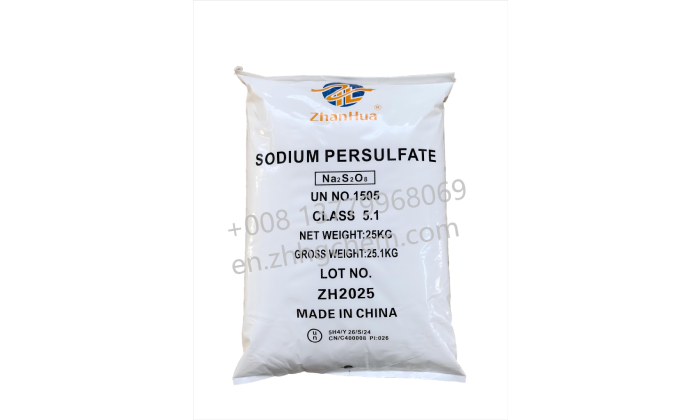Industrial Sodium Persulfate, a critical chemical raw material, is widely used in sewage treatment, electronics industry, textile dyeing, and other fields. Its powerful oxidizing properties make it indispensable in these sectors, whether for redox reactions in wastewater treatment or as an etchant in electronics manufacturing. Demand for industrial Sodium Persulfate has consistently grown, making it crucial to monitor price fluctuations. The price trend of industrial Sodium Persulfate in June 2025 will be influenced by multiple factors, including changes in market demand, raw material price volatility, and adjustments in policies and regulations, all of which interact to determine the final market price.

1. Direct Impact of Supply and Demand on Prices
From the supply side, the production capacity and output of major global producers directly determine market availability. As a key global producer of industrial Sodium Persulfate, China’s capacity and output significantly influence international markets. Fujian ZhanHua Chemical, one of the leading manufacturers of persulfate products, cannot be overlooked in terms of its production capacity and market share. With an annual production capacity of 50,000 tons of Sodium Persulfate—accounting for 64% of the domestic market—its pricing strategy serves as a benchmark for the industry. The company’s high capacity and market dominance give it significant influence in price setting.
On the demand side, the extensive applications of industrial Sodium Persulfate in sewage treatment, electronics, and other industries have sustained steady demand growth. However, supply-demand imbalances or seasonal fluctuations in demand can cause price volatility. For example, seasonal demand variations in the sewage treatment industry—such as increased wastewater treatment volumes during summer heatwaves—may drive short-term demand surges and impact prices.
2. Analysis of Raw Material Cost Transmission Mechanisms
The production of industrial Sodium Persulfate primarily relies on raw materials such as sulfuric acid and sodium sulfate. In June 2025, fluctuations in raw material prices will directly affect production costs and, consequently, market prices. The prices of sulfuric acid and sodium sulfate are influenced by factors including mineral resource extraction costs, transportation expenses, and supply-demand dynamics. A rise in raw material prices will increase production costs, pushing up market prices. Additionally, the stability of raw material supply chains—such as disruptions caused by changes in international trade conditions—can impact production costs and market prices.
3. Case Study: ZhanHua Chemical’s Market Pricing Strategy
Market competition is another critical factor influencing industrial Sodium Persulfate prices. Globally, the market share and technological capabilities of major producers shape competitive dynamics. Fujian ZhanHua Chemical holds distinct advantages in technological innovation and cost control, with advanced technologies and efficient production processes that position it favorably in the market. Furthermore, its investments in environmental protection and safety production enable it to adapt to evolving policies and regulations, maintaining competitiveness. As a national-level "Green Factory" certified under the ISO 14001 environmental management system, the company achieves a 90% wastewater reuse rate, meeting the strictest environmental standards.
However, intensified market competition may trigger price wars, particularly during supply-demand imbalances, as producers cut prices to capture market share. While short-term price wars may benefit consumers, they could harm long-term industry health.
4. Specific Impact Scenarios of Policies and Regulations
In June 2025, the global and Chinese macroeconomic environment will significantly affect industrial Sodium Persulfate prices. Factors such as economic growth, inflation, and exchange rate fluctuations can influence demand and production costs. For example, economic growth may boost demand and drive price increases, while inflation could raise production costs and impact prices.
Environmental policies and safety regulations are also key policy factors affecting the industry. Fujian ZhanHua Chemical’s investments in environmental protection and safety enable it to adapt to regulatory changes.However, rising environmental costs or production capacity constraints could increase production costs and affect market prices. Additionally, the 90-day moratorium formally implemented by China and the U.S. on May 14, 2025, has triggered a chain reaction of rising ocean freight costs.
Conclusion
Based on the above analysis, industrial Sodium Persulfate prices are expected to exhibit volatility in June 2025. Interactions between supply-demand dynamics, raw material prices, and market competition may cause prices to fluctuate within a certain range. Specifically, prices may remain stable if supply and demand are balanced, but significant deviations—up or down—could occur in the event of supply-demand imbalances or sharp raw material price shifts.